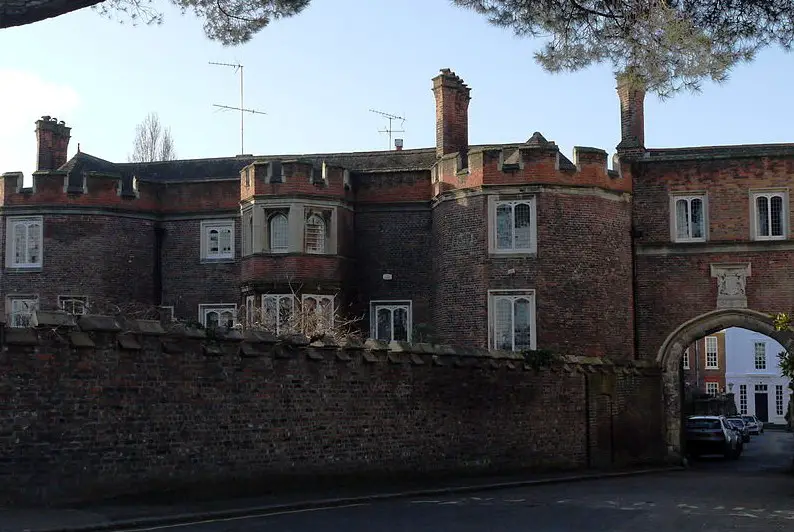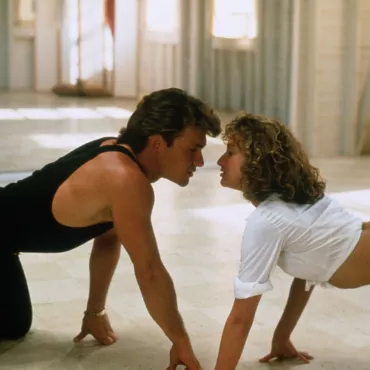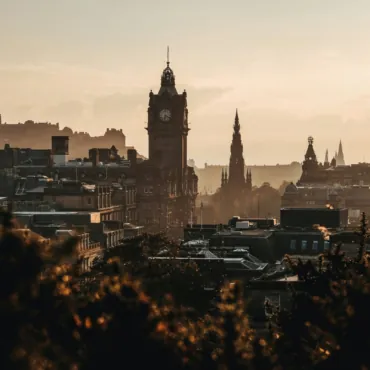1
Hatfield Palace

The country mansion Hatfield House is a prime example of Jacobean architecture. The present palace building was built in the 17th century by Robert Cecil, chief minister to King James I, and has survived in fine condition to the present day. It was formerly the site of the first Hatfield Palace, founded in the late 15th century. King Henry VIII took it for himself at the time of the Reformation and in December 1533 he put his children Edward and Elizabeth there.
In the estate Hatfield House passed almost all the childhood and youth of the future ruler of England. In it Elizabeth was trained in singing, drawing and etiquette, and, as she grew older, took lessons in history and philosophy from the best teachers in Cambridge. In November 1588, Elizabeth learned at Hatfield that she had become queen, and a few weeks later she held her first council in her new status at the residence.
Hatfield House still holds Queen Bess’s personal effects: a pair of gloves, silk stockings, and a portrait painted by the court miniaturist. It bears the inscription, “Non sine sole iris” (“Without rainbows there is no sun”). It reminds visitors to the estate that only the wisdom of the monarch can ensure the peace and prosperity of the country.
2
Eltham Palace

Eltham Palace in south-east London is a large medieval hall that was once a royal residence and an elegant Art Deco extension erected in 1930.
The palace dates back to the fourteenth century when the Bishop of Durham, Anthony Beck, gave it to Edward II, the future King of England. Thus, the estate became one of the most important and visited residences in the country. Eltham Palace could accommodate and feed the entire Tudor court, which, for a minute, was over 800 people! Up until the 16th century, it was the site of many Christmas dinners and other celebrations.
In the mid-1530s, the palace became home to Princess Elizabeth. Her mother, Anne Boleyn, often came to Eltham to spend time with her daughter. She even ordered the symbols of her coat of arms to be inserted in the windows of the gallery where the girl liked to play. After becoming an adult, the queen visited the palace rather infrequently, but in 1585 she restored the facade of the royal chambers, which had been submerged in the moat.
3
Hampton Court

Hampton Court Palace served as the residence of English kings until 1760. It was originally intended for Cardinal Thomas Wolsey, Henry VIII’s chief advisor. However, in 1529 Walsy fell into disfavor and, in order to somehow change his position, decided to give the palace to the king. The broad gesture did not save him from a sad fate. But Hampton Court was so well liked by Henry VIII that he began to use it as his country residence.
During the reign of Mary I, Henry’s eldest daughter by marriage to Catherine of Aragon, Elizabeth was under house arrest at Hampton Court – she was easily observed in the palace. Then Elizabeth came there already as queen in the early days of her reign. She ordered that several rooms be furnished in the residence for John Dee, an English mathematician, alchemist, and philosopher with whom she often consulted.
In 1562 at Hampton Court, the Queen was caught in an outbreak of smallpox, after which she cooled for a time to the palace, but after a few years began to return to it again to rest from the affairs of state. At the country residence, Elizabeth loved to dance, watch the entertainment in the Great Hall, flirt with courtiers, and play musical instruments, especially the virginal, an ancient variety of spinet. In addition, at Hampton Court, the Queen created her “Paradise Room,” decorated with precious metals and gems to dazzle important guests with its beauty.
4
Richmond Palace

Richmond Palace was one of the royal residences during the reign of Elizabeth I. It was built in 1501 under Henry VII, and in 1648 it was destroyed by order of Parliament. Only part of the structure survives, which includes the checkroom, the trumpeter’s house, which has 5 bedrooms, and the gatehouse.
Richmond Palace was one of Elizabeth I’s favorite places to visit. She especially liked to come here in winter, at Christmas. According to one version, she was attracted by the compactness of the residence – “modest” rooms better preserved heat. The Queen even referred to Richmond Palace as a “warm winter box” to shelter her old age. Especially for Elizabeth in the palace staged performances by actors from London companies, including the one to which William Shakespeare belonged.
According to the queen’s biographer Edmund Bohan, while at the palace, the queen would start her morning with work and then go for a walk. And when it was too cold or raining, she would peer into the enclosed galleries that overlooked the beautiful gardens.
5
Ashridge House

Ashridge is a country estate in the county of Hertfordshire, located in the Chilterns Hills, northwest of London. In the Middle Ages it was the site of a monastery, and in 1539 the estate came into the possession of the Crown and became the family residence of Henry VIII, which he bequeathed to Elizabeth. The future queen spent eight years at Ashridge, and it was there, in 1554, that she was arrested by her sister Mary on suspicion of treason during the Wyatt Rebellion.
In the 18th century the estate fell into the hands of the Duke of Bridgewater, who invited architects to transform it into a fashionable Gothic Revival country house. It is currently home to one of the best business schools in the world, so you can only see the estate when the school is closed during the summer months.
